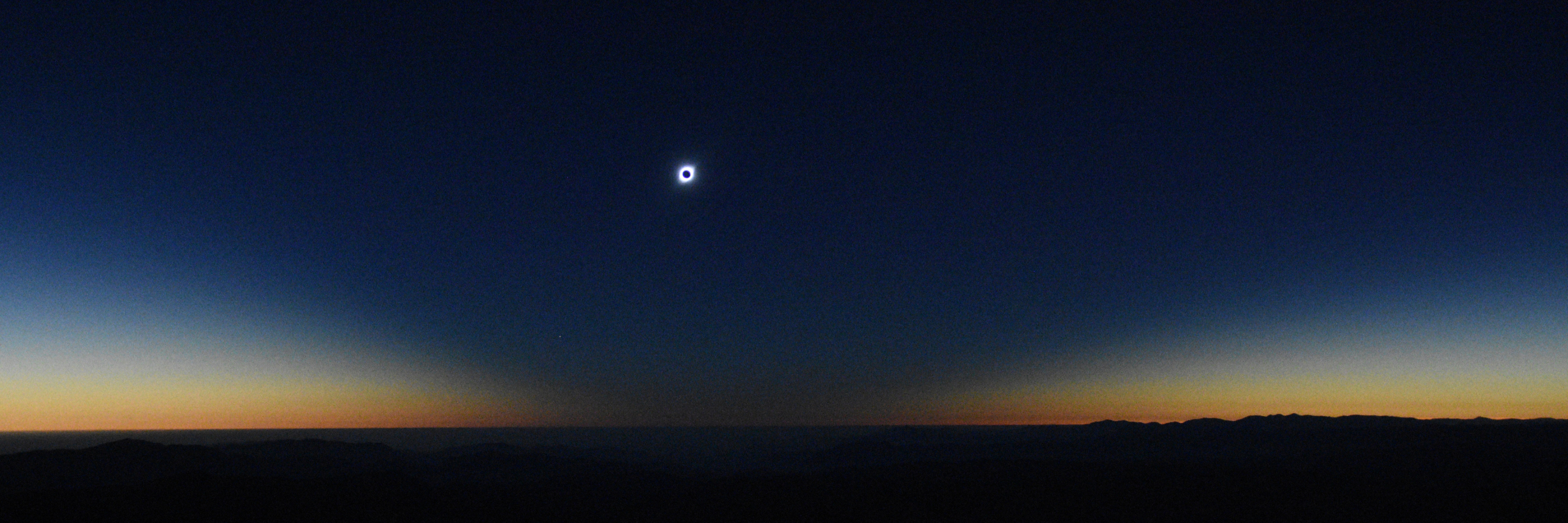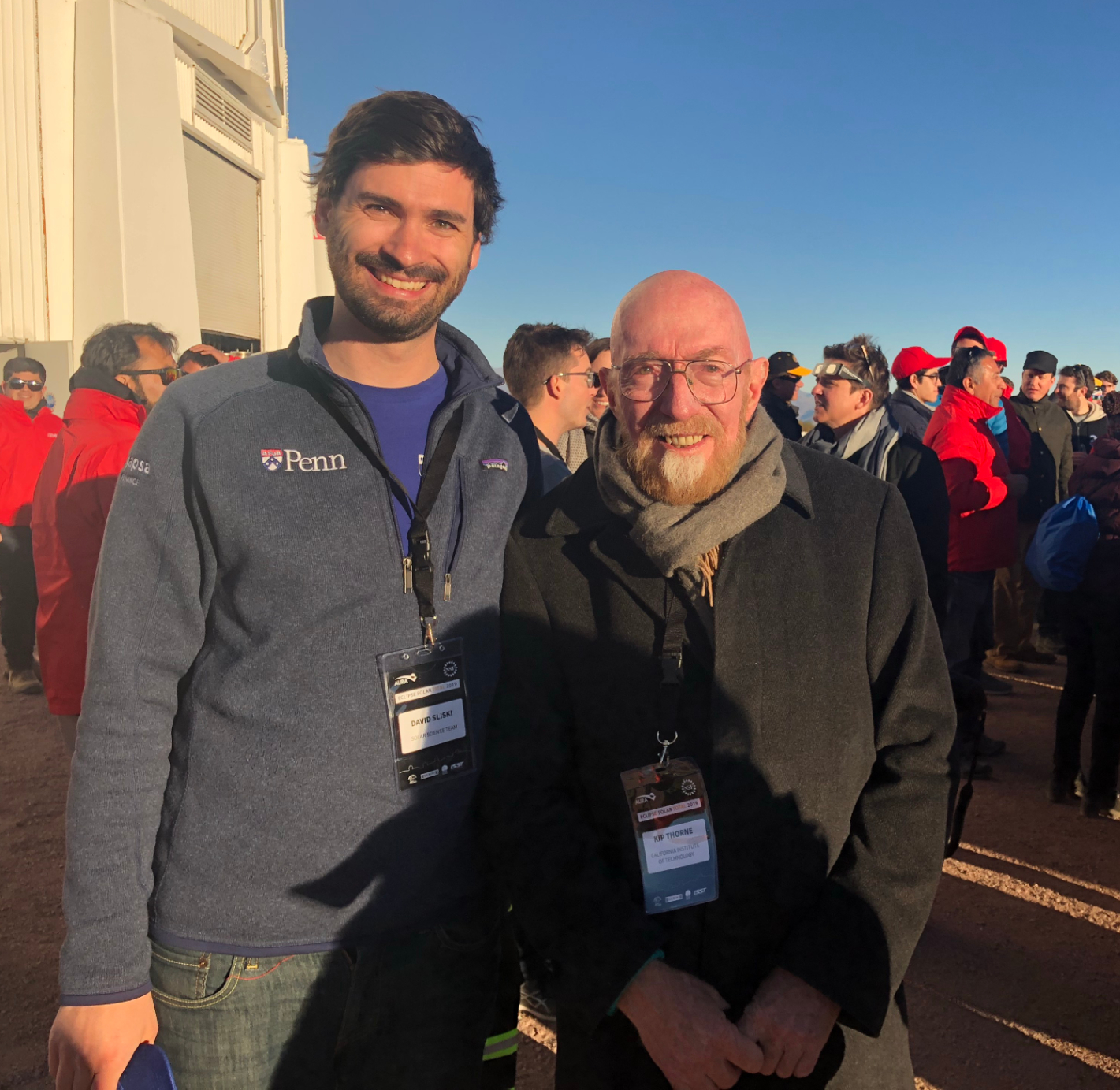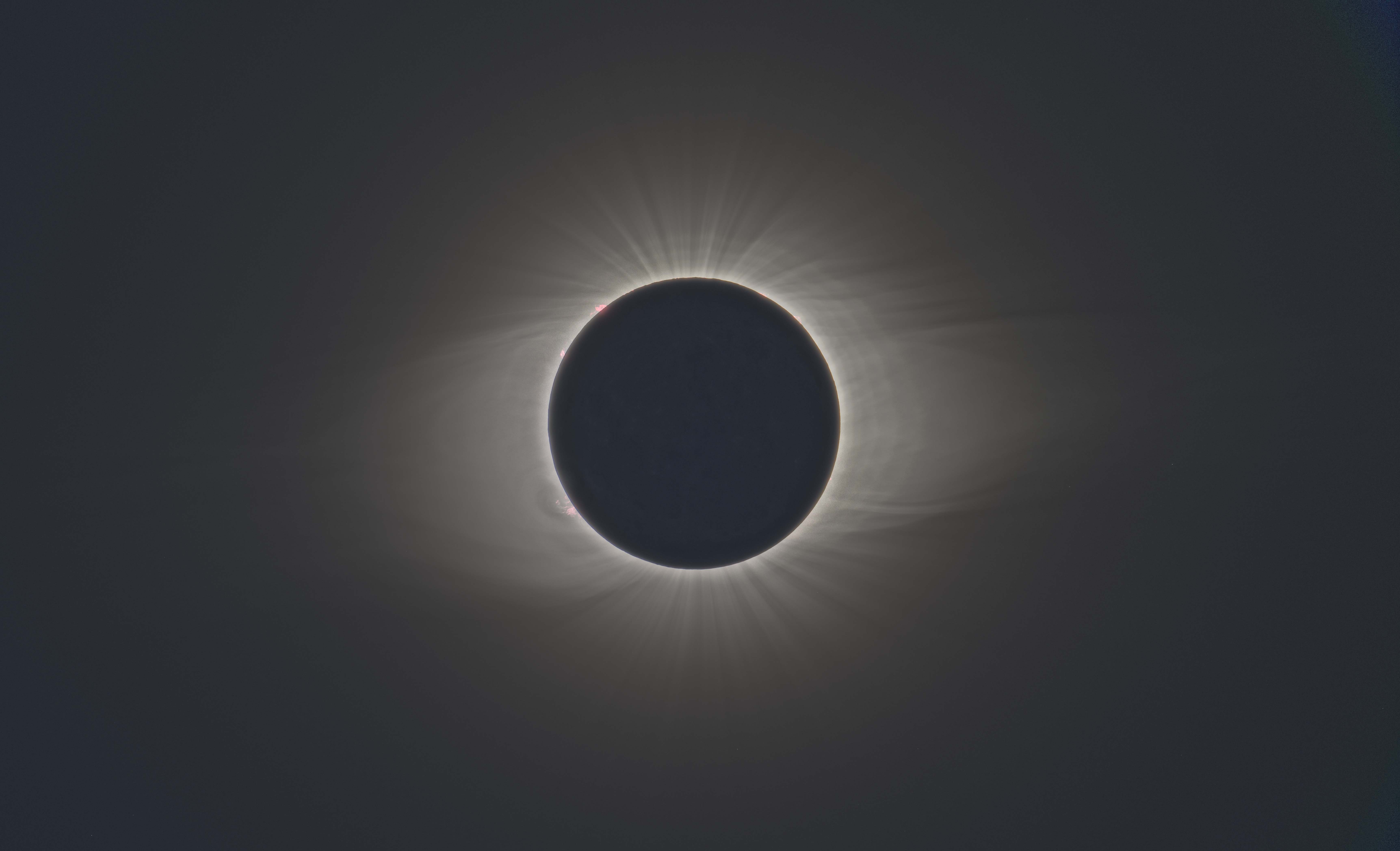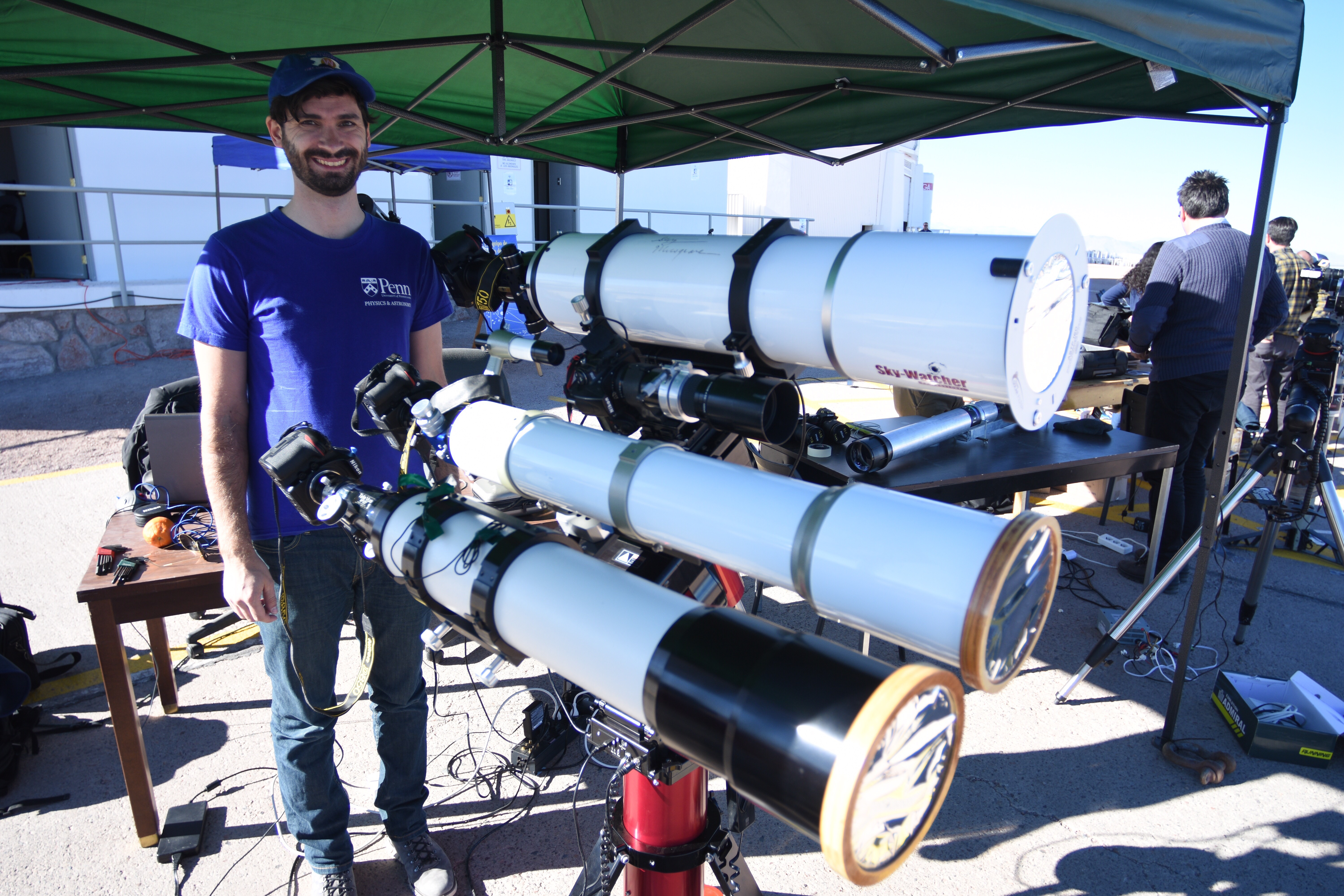
At the end of a clear afternoon on July 2, parts of South America and the southern Pacific became temporarily shrouded in darkness as a total eclipse moved its way across the southern hemisphere.
David Sliski, a graduate student in Penn’s School of Arts and Sciences, was a member of a team of scientists who traveled to the Cerro Tololo Inter-American Observatory for the eclipse. Their goal was to collect images of the sun’s corona, the outermost part of its atmosphere, during the two-minute, six-second totality.
The inner corona, which extends far out into space and causes solar winds, is normally difficult to study, but a total eclipse allows researchers to capture high-resolution images of its shape and structure to see how it has changed over time.
Sliski first met Jay Pasachoff, an astronomer from Williams College who has now seen 71 total eclipses, more than any other person in history, as a high school student with a brimming interest in astronomy. He kept in touch while an undergraduate studying astronomy at the University of Massachusetts at Amherst, and in 2017 traveled to Oregon and helped Pasachoff image the “Great American Eclipse.”
Thanks to the quality of the images he collected, Sliski was invited to join Pasachoff’s team of students and researchers at Cerro Tololo, one of only five groups of scientists given the rare opportunity to observe the 2019 eclipse at an international observatory.
“Each glimpse we get of the sun during a total solar eclipse—only a couple of minutes every 18 months or so—gives us a different set of features to look at,” says Pasachoff, who led the scientific team tasked with imaging the corona.
A large amount of planning goes into every eclipse, with only a two-minute window to collect as many images as possible. “You need to be very calculated with what exposures you want to take,” explains Sliski. “You can adjust the focus, the duration [of the exposure], but you lose that data, so you need to be very prescribed.”
With NASA collecting wider images of the sun during the totality, Sliski used a single mount telescope with three telescopes from the ground to complement the images collected through the observatory. During the totality, Sliski took pictures of the inner, middle, and outer sections of the corona, optimizing image quality against exposure duration to help fill in the gaps for the data that couldn’t be collected from the observatory.
Then, using a similar approach that was used to visualize the event horizon of the Messier 87 galaxy’s black hole, Sliski stacked together more than 500 images collected from the three cameras to create the best composite of the eclipse. This amounted to more than 100GB of data that was distilled into a single image.
The research teams also had to deal with the severe angle of the eclipse. The observatory sits at 7,241 feet above sea level, so the totality was very low over the horizon, only 13 degrees at its peak and, close to sunset, only two degrees. By comparison, the 2017 eclipse was around 40 degrees above the horizon.
“When you get closer to the horizon, you get more air, and it’s harder to image,” says Sliski. It’s one of the reasons why Sliski’s on-the-ground measurements were so essential. The large telescopes at the observatory aren’t physically able to make observations which are that close to the horizon.
The data collected on Tuesday will be used to improve scientific models that predict solar flares and coronal mass ejections, which cause disturbances in the magnetosphere. At low levels, this geomagnetic activity causes aurora australis and borealis but in extreme cases can severely damage electrical grids and satellites.
Thanks to the numerous studies of eclipses since the 1990s, scientists now have a better picture of the long-term trends of these potentially hazardous phenomena. “We think about climate change as man-based, or Earth-based, but occasionally you have to think about what the sun dictates,” says Sliski. “It’s important to study [eclipses] in the instances you have by going to great lengths in faraway places.”
Sliski is pleased with how the day went and is thankful that the weather cooperated. And even with the next total eclipse not happening until December 2020, and no total eclipses visible in the U.S. until April of 2024, Sliski has already begun planning for the next “eclipse hunt.”
He says that total eclipses like the one on July 2 can help astronomy feel more tangible for people around the world.
“There’s lot of stuff in astronomy that the public can relate to but that are somewhat esoteric. With solar eclipses, literally any person can see it and say, ‘That’s cool!’”
This work was supported by a grant awarded to Jay Pasachoff by National Science Foundation and a grant from Sigma Xi.
The Cerro Tololo Inter-American Observatory is a complex of astronomical telescopes and instruments located approximately 80 km to the East of La Serena, Chile. The complex is part of the National Optical Astronomy Observatory, which is managed by the Association of Universities for Research in Astronomy and funded by the National Science Foundation.










